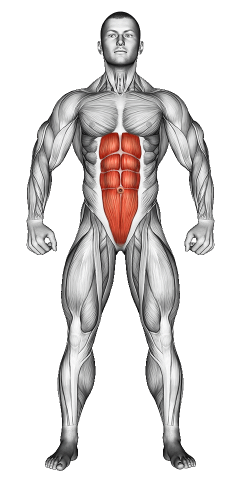Hand to Feet Ball Transfer: Video Tutorial & Exercise Guide

Written By: Claude Michael
Updated: Oct 13, 2024
| Workout | Hand to Feet Ball Transfer |
| Primary Muscle Group | Abs |
| Equipment Required | Stability Ball |
| Force Type | N/A |
| Mechanics | Compound |
| Exercise Type | Strength |
| Difficulty | Intermediate |
Hand to Feet Ball Transfer: Video Tutorial & Exercise Guide
- 1.Hand to Feet Ball Transfer: Muscle Groups
- -1.1Primary Muscle Group
- -1.2Secondary Muscle Group
- 2.Hand to Feet Ball Transfer: Step-by-Step Guide
- 3.Hand to Feet Ball Transfer: Overview
- 4.Hand to Feet Ball Transfer: Benefits
- 5.Hand to Feet Ball Transfer: Pro Tips & Advanced Techniques
- 6.Hand to Feet Ball Transfer: Progression Plan
- 7.Hand to Feet Ball Transfer: Frequently Asked Questions (FAQs)
Hand to Feet Ball Transfer: Step-by-Step Guide
- Step 1: Lie flat on your back with your arms extended overhead and your legs straight. Hold an exercise ball between your hands.
- Step 2: Engage your core and lift your arms and legs simultaneously, bringing the ball towards your feet.
- Step 3: Transfer the ball from your hands to your feet by squeezing it between your ankles. Lower both your arms and legs back down towards the floor without touching it, keeping your core tight.
- Step 4: Lift your arms and legs again, this time transferring the ball back to your hands. Lower both arms and legs to the floor while maintaining control.
- Step 5: Repeat the process, passing the ball between your hands and feet for the desired number of reps, maintaining core engagement and control throughout.
Hand to Feet Ball Transfer: Overview
The Hand to Feet Ball Transfer is a full-body core exercise that focuses on strengthening the abdominals, particularly the rectus abdominis (six-pack muscles). By lifting both your arms and legs, you also engage your hip flexors and lower abs, making it a dynamic and effective core workout.
This movement requires coordination and control as you transfer the ball between your hands and feet, making it great for improving both strength and stability in the core muscles.
Hand to Feet Ball Transfer: Benefits
Hand to Feet Ball Transfers are excellent for targeting your entire core. The simultaneous movement of your arms and legs forces your abdominals to work harder to stabilize your body.
This exercise also improves coordination and balance while engaging the hip flexors and lower abs. It’s a great way to increase core strength, endurance, and muscle control.
Additionally, the exercise can help enhance flexibility and mobility in your hips and hamstrings as you lift your legs and perform the ball transfer, making it a versatile addition to any workout routine.
Hand to Feet Ball Transfer: Pro Tips & Advanced Techniques
For the best results, focus on controlling the movement rather than rushing through it. Keep your lower back pressed into the floor to avoid arching, and maintain constant tension in your core. For an extra challenge, hold the ball between your feet or hands for a few seconds before transferring it back. Ready to strengthen your core? Let’s get moving with Hand to Feet Ball Transfers.
Hand to Feet Ball Transfer: Progression Plan
Beginner
Intermediate
Advanced
Hand to Feet Ball Transfer: Frequently Asked Questions (FAQs)
What muscles does the Hand to Feet Ball Transfer target?
+This exercise primarily targets the rectus abdominis (the six-pack muscles) and the lower abs. It also engages the hip flexors and stabilizer muscles in your core.
Is the Hand to Feet Ball Transfer suitable for beginners?
+Yes, beginners can perform this exercise with a smaller range of motion or use a lighter ball. As strength and coordination improve, they can increase the difficulty.
How often should I include this exercise in my routine?
+Include this exercise 2-3 times per week as part of your core routine. It pairs well with other core exercises to help build strength and endurance.
What common mistakes should I avoid?
+Avoid arching your lower back or using momentum to complete the movement. Focus on slow, controlled transfers and keeping your core engaged throughout.
Can I make this exercise more challenging?
+Yes, you can make it more difficult by using a heavier ball, increasing the range of motion, or holding the ball between your hands or feet for a longer period before transferring.
Share
Don’t Wish for It, Work for It – Join the FlexXP Newsletter Today!
Thank you for signing up for the FlexXP Newsletter!
This site is protected and the Google Privacy Policy and Terms of Service apply.
